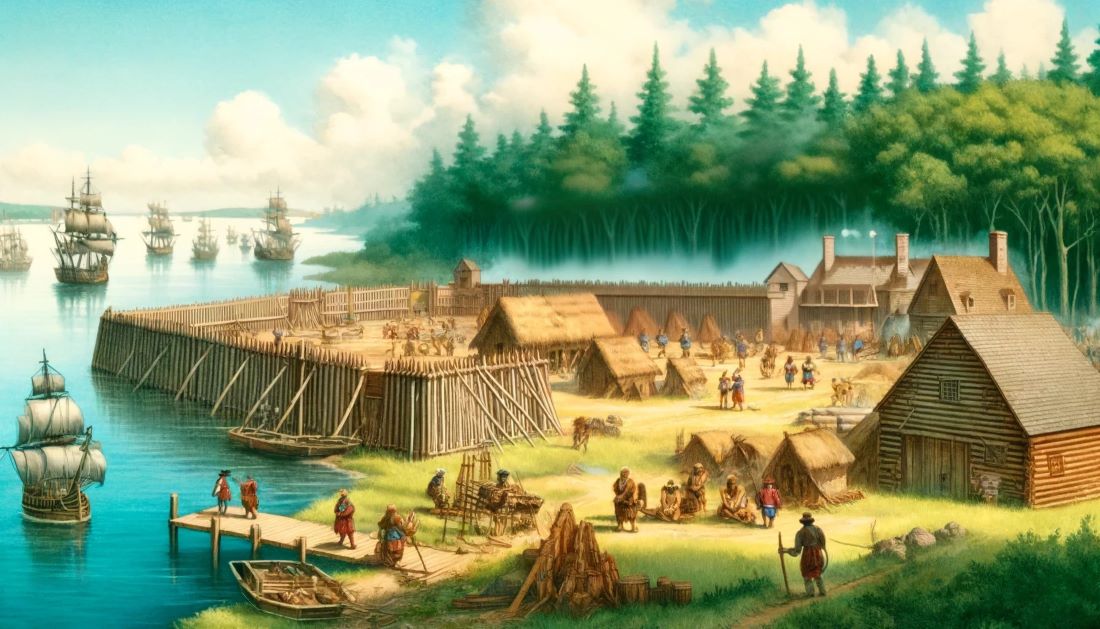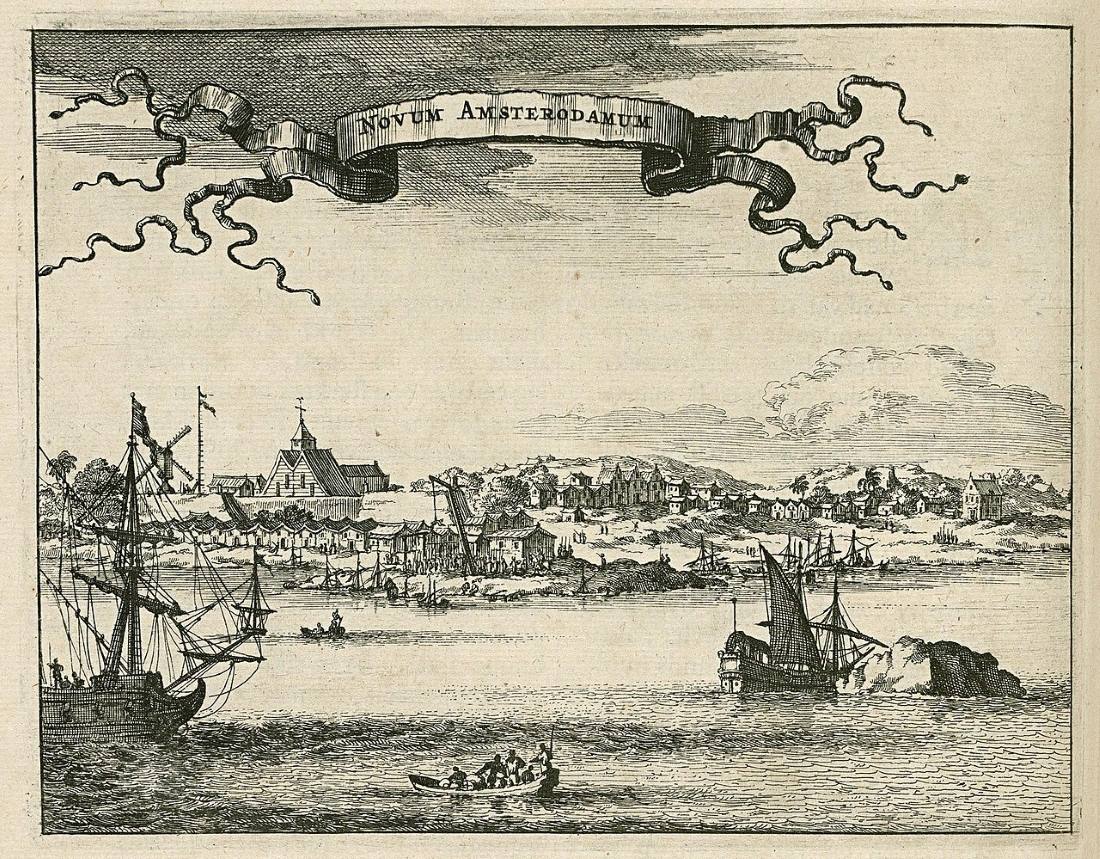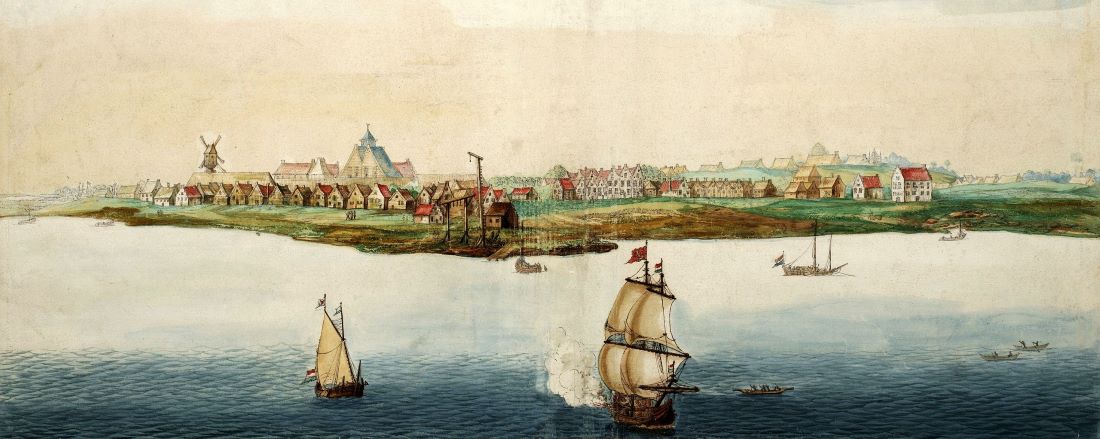New York City today is one of the largest and most visited cities in the world. It remains the most populous city in the United States, with a current population of approximately 8.2 million residents. The metropolitan area surrounding it is even more expansive, encompassing over 20 million people. However, 400 years ago, in 1626, New York presented a completely different landscape. One of the most illuminating sources from that era is Nicolaes van Wassenaer, who provides an eyewitness account of life, commerce, and the intermingling of cultures in early New Amsterdam, the nascent community that would eventually evolve into modern New York City. His detailed descriptions offer a captivating glimpse into the origins of this iconic metropolis.
Roots of New York’s Foundation
By the late 16th and early 17th centuries, the quest for new trading and agricultural opportunities drove several European nations to explore the North American coast. In 1609, the Dutch East India Company took a significant step when it dispatched the English-born navigator Henry Hudson to seek new routes and resources. Hudson’s expedition led him up the river that would later bear his name, staking a claim for the Netherlands in this lush, new territory.

Just five years after Hudson’s exploration, the Dutch established their first major foothold in the region with Fort Orange, located near present-day Albany, New York. This was initially a mere trading post aimed at capitalizing on the lucrative fur trade with local Native American tribes. By 1624, the ambitions of the Dutch had grown, leading to the establishment of New Amsterdam at the southern tip of Manhattan Island. Positioned strategically at the mouth of the Hudson River, New Amsterdam was destined to become a bustling and vital commercial hub in the new world. The settlement rapidly evolved from a rudimentary trading post into a vibrant community, laying the foundational stones of what would become modern-day New York City.
Introducing Nicolaes van Wassenaer
Nicolaes van Wassenaer, an Amsterdam native born around 1571 and deceased by 1630, served as a distinguished doctor and chronicler during a transformative period in Dutch history. His extensive work, the “Historisch Verhael” or “Historical Account,” spans 21 volumes and was a renowned collection in its time, documenting a vast array of news and contemporary events across the Netherlands, Europe, Asia, America, and beyond. This compendium is particularly valuable for its detailed, firsthand observations of early Dutch settlements in New York, then known as New Amsterdam.

Van Wassenaer’s accounts are some of the earliest and most vivid descriptions of the interactions between Dutch colonists and Native Americans in North America. His writings not only cover these cultural exchanges but also provide insights into daily life, commerce, and the burgeoning community spirit in early New Amsterdam. Remarkably, van Wassenaer was also involved in scientific observation, recording some of the oldest known temperature measurements between 1622 and 1630. His global correspondence and frequent publications, including pamphlets and biannual updates to his “Historisch Verhael,” make his works a crucial source for understanding the early European perspective on the New World.
New Amsterdam (New York) in 1626: Insights from Nicolaes van Wassenaer
In 1626, New Amsterdam was in the throes of transformation from a modest trading post into a burgeoning settlement. This nascent colony, staked out on Manhattan Island—referred to as the Manhates—was defined by its strategic position and the zeal of its settlers for trade and agriculture. The fort, being constructed under the direction of the engineer Master Kryn Frederycks, promised to fortify this Dutch outpost significantly. It was not merely a military installation but a nucleus around which the colony could safely expand.
The economic vitality of New Amsterdam during this period is vividly captured in the accounts of exports back to the Netherlands. In November alone, the ship returning home carried an impressive cargo that highlighted the natural bounty of the region: 7,246 beaver skins, 675 otter skins, 48 mink skins, 36 wild cat skins, among various other types. This haul not only underscores the thriving fur trade but also the colony’s capacity to harvest rich resources efficiently. Additionally, the shipment included many pieces of oak timber and hickory, which were critical both for building within the colony and as valuable export products.

The infrastructure of New Amsterdam was modest yet functional, with the counting-house, the economic hub of the settlement, housed in a stone building roofed with thatch. The description of other houses made of bark and the communal living arrangements suggest a closely-knit community focused on survival and mutual assistance. The mention of François Molemaecker’s construction of a horse-mill atop which a room large enough to hold a congregation was to be built, signals the community’s growth and its aspirations towards establishing a more structured civic and religious life.
From these details, it is evident that New Amsterdam was a community teeming with activity and potential. The exports not only demonstrate the colony’s rich natural resources but also its residents’ ability to exploit these resources effectively. This economic hustle, combined with strategic planning and communal efforts in infrastructure development, laid a robust foundation for what would eventually grow into the bustling metropolis of New York City. The early settlers of New Amsterdam were not just surviving; they were thriving, creating a footprint on the shores of the New World that would endure through the centuries.
Historical Challenge: Can You Conquer the Past?
Answer more than 18 questions correctly, and you will win a copy of History Chronicles Magazine Vol 1! Take our interactive history quiz now and put your knowledge to the test!

